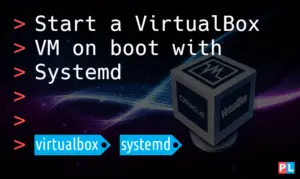
- #Virtualbox startx how to#
- #Virtualbox startx install#
- #Virtualbox startx update#
- #Virtualbox startx software#
Note that some programs should instead not be forked, to avoid race bugs, as is the case of xrdb. Otherwise, the script would halt and wait for each program to exit before executing the window manager or desktop environment. Long-running programs started before the window manager, such as a screensaver and wallpaper application, must either fork themselves or be run in the background by appending an & sign.
#Virtualbox startx install#
# Optional: Install a more feature-rich applications menuĬonfig.vm.Note: At the very least, ensure that the last if block in /etc/X11/xinit/xinitrc is present in your ~/.xinitrc file to ensure that the scripts in /etc/X11/xinit/xinitrc.d are sourced. # Optional: Use LightDM login screen (-> not required to run "startx")Ĭonfig.vm.provision "shell", inline: "sudo apt-get install -y lightdm lightdm-gtk-greeter" # (Not sure if these packages could be helpful as well: virtualbox-guest-utils-hwe virtualbox-guest-x11-hwe)Ĭonfig.vm.provision "shell", inline: "sudo apt-get install -y xfce4 virtualbox-guest-dkms virtualbox-guest-utils virtualbox-guest-x11"Ĭonfig.vm.provision "shell", inline: "sudo sed -i 's/allowed_users=.*$/allowed_users=anybody/' /etc/X11/nfig" # Display the VirtualBox GUI when booting the machineĬonfig.vm.provision "shell", inline: "sudo apt-add-repository multiverse & sudo apt-get update" # Optional - enlarge disk (will also convert the format from VMDK to VDI): # Log in as user "vagrant", password "vagrant". # After reboot, the VM screen should show the LightDM login screen.
#Virtualbox startx software#
Update: I've created a GitHub repo from this example, and added many software packages for frontend + backend development.
#Virtualbox startx how to#
Here is a slightly adapted Vagrantfile for Ubuntu 18.04 LTS / bionic - thanks to Air's and Nik's answers, and this post explaining how to increase the disk size when using VirtualBox (default = 10 GB). If it's missing, you can replace with the equivalent: sudo VBoxClient -clipboard
#Virtualbox startx update#
Update 2: Tried this today and the VBoxClient-all script isn't always installed. Only now should you start the GUI as the vagrant user, with $ startxfce4&.$ sudo apt-get install -y xfce4 virtualbox-guest-dkms virtualbox-guest-utils virtualbox-guest-x11 This will give you a healthy screen resolution, integrated mouse, etc.


You really want to stay the vagrant user. Update: For a better experience, I recommend these improvements: That's it, you should be landed in a xfce4 session. If this is the first time you're running this Ubuntu environment, you'll need to run the following command before installing xfce4: Now you just need to install and start xfce4.


We would need to have our development environment within the machine, so we would need a complete GUI, so when typing "vagrant up" a machine with a complete desktop environment (XFCE, KDE.) should appear. However, Vagrant seems very focused to develop on the host, letting the machine in the background. Combined to puppet, this would solve us the problem that everyone have different software versions installed in the VM. We would like to move one step further, and use the capabilities of Vagrant to have the description of the machine in a text file and then be able to "raise" that machine based on that text file. My company's development environment is based on virtual machines, running on VirtualBox.


 0 kommentar(er)
0 kommentar(er)
